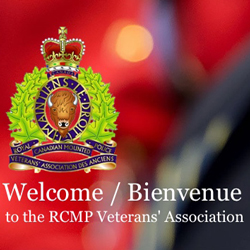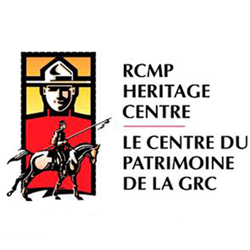What A Year 1920 Was For The Force!

Veteran Ric Hall has provided us the following article which provides an insight into little known details about the Force.
Last member of the RNWMP
Constable William Percy Hewer, Reg # 9021, joined the RNWMP January 1920, was the last member to be sworn into the RNWMP. He served in “E” Division. No further information is available on his service. Big changes were coming following Constable Hewer becoming a member of the RNWMP; I hope he saved all his paper work and kit! Most likely he was probably unaware of his place in the history of the Force.
Dominion Police
On February 01, 1920, the Royal Canadian Mounted Police was formed by the merger of the Royal Northwest Mounted Police and the Dominion Police. Arising from the Western Frontier Constabulary, which had been in existence since 1864, the Dominion Police was created on May 22, 1868 after the assassination of Thomas D’Arcy McGee. It was organized as a police force for protecting federal government buildings (including the Parliament Buildings on Parliament Hill) and naval yards at Halifax and Esquimalt, providing bodyguards for government leaders, carrying out secret service work arising from the activities of the Fenian raids, and enforcing certain federal laws such as those relating to counterfeiting and human trafficking. The Police also acquired responsibilities for compiling fingerprint and criminal records and administering a parole service.

Photograph of the members of the Canadian DominionPolice on Parliament Hill.
In May 1918, the 969-member Dominion Police was assigned under the Department of Militia and Defence and became a civilian wing of the Canadian Military Police Corps. The civilian members of the CMPC were merged with the Royal Northwest Mounted Police (Canada’s western police force) on February 1, 1920, to form the Royal Canadian Mounted Police. The CMPC was disbanded on 1 December 1920.

Photograph on the left is the Dominion Police Badge and went they switched over to the RCMP their new badge incorporated the RCMP badge and they continued to wear their blue uniforms and Bobby style helmets.(Source of photo – Ric Hall’s Photo Collection).
RNWMP to RCMP
It was the year the Treaty of Versailles was ratified; the year the League of Nations held its first meeting in Geneva. It was 1920 – an important year in world history and the beginning of an era of prosperity in Canada following the demobilization of the armed forces after World War I. One new policy adopted by the Government was to have a far-reaching effect on law enforcement in Canada in years to come – there was to be only one federal police force and it would exercise jurisdiction in all parts of the Dominion. Legislation to inaugurate this development had been approved in November 1919, when four important amendments to the RNWMP Act were passed. On Jan 27, 1920 an Order-in-Council was passed which a) changed the Force’s name to the RCMP; b) made provision for the establishing of headquarters – then at Regina – at any point in Canada; c) absorbed members of the old Dominion Police force into the RCMP, and d) granted the Commissioner full control and management of the Force under the Minister of Justice. These changes became effective on February 1 and the following day a further Order-in-Council was passed authorizing the transfer of headquarters from Regina, the “cradle of the Force” to Ottawa. The first HQs in Ottawa were located above a hardware store!
In 1920 Aylesworth Bowen Perry, O.044, who Joined With Commission (JWC), was in his twentieth year as Commissioner of the Force. He served in the NWMP, RNWMP and RCMP. Imagine the stories he could have told.

Photographs of Commissioner Bowen Perry (Source of photo – Ric Hall’s Photo Collection).
In 1920 the Force has 73 officers, 1,598 NCOs, Constables and Special Constables.
First member of the new RCMP
The first member signed on with the new RCMP, February 5, 1920, is Lewis Walker, Reg # 9022. He was fired on June 25, 1924. I could find nothing to indicate why he was fired but it does appears that that Force could “fire” members quite easily back in the day! I wonder if Constable Hewer and Constable Walker were acknowledged for their positions as the last and first members of the old and new Force, or was it just another day at the office. Daniel Mowat Ormond, Officer # O.197, was the first commissioned officer in the RCMP, joining in February 1920, direct from the army. He resigned a few months later.
Edward, Prince of Wales becomes “Honourary Commandant” of the Force, March 1920, till he abdicates from the throne in 1936.

Photograph of Edward Prince of Wales inspects members at “Depot” 1919 (Source of photo – Ric Hall’s Photo Collection).
“N” Division
These were somewhat troubled times in Canada and it was decided that still another division stationed in Ottawa could supply personnel to various points in Eastern Canada at a moment’s notice, should the occasion arise, rather than call all the way to “Depot” for re-enforcements, as the Force was mainly equestrian at that time, a complete mounted division was organized at “Depot” and transferred to Ottawa. It was designated “N” Division. “N” Division was established at Rockcliffe, on March 17-18 the 160 Officers, NCOs, constables and 108 horses that had begun training in drill and riding at Regina the previous October, arrived in Ottawa to form the Force’s eastern training establishment. They were originally quartered at the Central Canada Exhibition grounds, Lansdowne Park, in what was referred to as the “hen house.” The Poultry Building of the exhibition! Good thing there were not any Division or Association Reps in those days!
Years later Commissioner Harvison who was a constable with the group that moved to “N” Division ” later related the following; “one of our first chores around Ottawa was that of recapturing eight of the horses that escaped during the unloading.”
Below is Constable Harvison -center- at “N” Division with two of his vertically challenged mates.

Photograph of three original RCMP members to Ottawa (left to right): Cst. Joseph Field (#8778), Cst. Clifford Walter Harvison (#8758) (who would later become Commissioner of the RCMP) and Cst. William Thomas Pirie (#8584)
The members of “N” Division remained fit, although lacking a gymnasium available to the division in the early days. It would hardly seem necessary, with the riding, stable work and other activities.



Photograph of RCMP Sandy Hill camp in Ottawa (Source of photo – Ric Hall’s Photo Collection).
This is home – perhaps a little better, at least in the summer, better than living in the “hen house”!

1920 Photograph of Sandy Hills Ottawa – RCMP field kitchen (Source of photo – Ric Hall’s Photo Collection).
According to those who served at the time in the division, the first Musical Ride presented in Eastern Canada, took place May 24, 1920 in front of the grandstand at Lansdowne Park. On June 27th 38 NCOs and constables under Inspector Frere (Reg. # 7373) and Sergeant Margetts (Reg. # 8871) left Lansdowne Park for a 75 mile ride to Brockville for that city’s Dominion Day Celebration, July 1. Arriving at Brockville June 30th and after cleaning up they were invited to the residence for an “at home” of the widow of James M. Walsh. I can well imagine this group of horsemen with their tea cups and being on their best behavior! After performing the “ride” and a game of softball with the Havana Red Sox, which they lost 11-4, they mounted up and rode back to Ottawa.
Troops on parade at Lansdowne Park, Ottawa, March 1920 – 160 men moved in two contingents to “N” Division from Regina.

1920 – Photograph of the first RCMP members stationed to Ottawa. Their first temporary accommodations in Ottawa was in the Landsdowne Park. In this photograph, these first 160 members were on parade for inspection.
Up until 1925 each summer the Force had to vacate the fair grounds and live in tents at Rockcliffe, which served as a rifle range for DND, or at the summer camp at Long Island. June 1925 the Force acquired buildings vacated by DND and “N” Division was officially transferred to the Rockcliffe Rifle Ranges.
The breeding of sled dogs and their training for northern service took place at “N” Division and later Police Service Dogs were also trained there. By 1934 “N” Division was a compact unit with married quarters, barrack block (with rifle and revolver ranges in the basement, along with a coal cellar.), stables, guardroom and other support staff buildings.
In 1935 an extensive building program took place with new stables also being built. A third story was added to the barrack building allowing for the sleeping of up to 200 men. Can you imagine the Officer Commanding’s married quarters were in the basement!

Photograph of the new “N” Division Building in Rockclliffe (Source of photo – Ric Hall’s Photo Collection).
New stables were started in 1939 and completed in 1940. They still stand to this day and are the home of the Musical Ride. The stable building is recognized Federal Heritage Building.

Photograph of the “N” Division Stables (Source of photo – Ric Hall’s Photo Collection
“N” Division housed the RCMP Band and “Air” Division was moved to Rockcliffe next to the RCAF hangars. At the outbreak of WW II the No. 1 Provost Company, made up of 115 all ranks, trained at Rockcliffe in traffic control, foot drill and motorcycle riding. This company left Canada on Dec 08, 1939 and accompanied the First Division, CASF, to England.
Due to WW II there was a shortage of personnel in the field, recruit training was shorten to three months, reverting back to six months….not including equitation, after cessation of hostilities. A new policy was adopted that squads or troops, would take their “first part” training at “Depot” or “N” Division and their “second part” training at the opposite training division. Thus was created the rivalry between the two “Depots” as to who
produced the best recruits. This lasted till 1966 when recruit training ceased at “N” Division.
Over the years “N” Division has continued to change and build, eventually housing the Canadian Police College and continues to this day to be the home of the Musical Ride. “N” Division ceased to exist as it was absorbed into the National HQs complex. To many old hands, it will always be “N” Division.
During this period in the history of the Force there were so many interesting characters and with them through their career a host of personal stories became what the Force is known for world-wide. Many of the stories have become lost over time or were never recorded. Just members doing their job! The use of horses was still very much in evidence as cars first started making their appearance in 1917. One can only imagine the hardships members endured in the Yukon and Northwest Territories while undergoing those long cold patrols by dog sled, which often covered thousands of miles.
Only member joining in 1920 on the Honour Roll
November 1920 Edgar (Newt) Millen, Reg # 9669, joins the RCMP. He is the only member who joined that year to be on the Honour Roll – # 51. Twelve years after joining the Force he was shot and killed by Albert Johnson, “the Mad Trapper of Rat River”. Johnson was killed by RCMP members in a shoot-out after a 48-day 240 km manhunt in 40 below weather. Johnson had been charged with killing Constable Millen and wounding Constable Alfred Weldon ‘Buns’ King, Reg # 10211. The manhunt was the first ever to be broadcast live on Canadian radio. Albert Johnson was believed to be 31 years of age but was never actually identified. No family member ever came forward to claim the body even though he had over $2000 cash and a quantity of placer gold in his possession.
Only member killed on duty in 1920 on the Honour Roll
Corporal Ernest Usher, Reg # 6096, is #43 on the Honour Roll. He died August 07, 1920, killed attempting to arrest train bandits near Bellevue, AB. Cpl. Usher served from September 1914, until 1918 when he volunteered for “A” Squadron, cavalry draft, during WWI. Upon his return he was posted back to “K” Division until his death.
On August 02, 1920, three men boarded the CPR passenger train at Lethbridge and headed west. En route they used pistols and herded the passengers and crew into one coach, where they robbed them of their cash and valuables, including the conductor’s watch. When the train stopped at the Sentinel siding, the three jumped from the train and disappeared into the bush. By the time the train reached Crow’s Nest telegraph, word was spread of the robbery.
The Alberta Provincial Police assisted by the RNWMP launched a massive manhunt and soon learned that they were looking for three Russians – George Akoff, Alex Aukoff and Tom Basoff – who arrived in Lethbridge from Montana. Many “Wanted” posters were spread far and wide. On August 6, the trio tried to cash a cheque at Coleman, so it was known they were still in the local area. On August 7, a Justice of the Peace at Bellevue saw two men fitting the police’s description enter a cafe; he promptly informed three policemen.
Constables Frewin and Bailey of the APP and Corporal Usher entered the cafe and saw the two fugitives sitting in a booth. Frewin drew his gun and told them to put their hands up. Instead, they reached down and Frewin shot Akoff in the neck. By now Basoff had had his pistol drawn, so Usher began to grapple with him. Despite being shot, Akoff was shooting back. Then Baskiff broke free and began shooting, hitting both Usher and Bailey. Now all were shooting and the police retreated to the street, where Usher and Bailey both fell. Basoff shot and killed both at point-blank range then killed Akoff his wounded partner. By then the Justice of the Peace had joined in the shooting; however, Basoff still escaped.
A few days later the CPR police quietly arrested Basoff near Pincher Creek. Basoff was convicted of murder and hanged at Lethbridge, December 22, 1920….Merry Christmas Tom Basoff….you murdering S.O.B.! Over three years later Auloff was located in Montana, extradited to Canada and sentenced to seven years imprisonment for ‘train robbery.” He died in prison.
New Badge of the Force
The badge of the Force is redesigned in 1920 with the “Tudor” crown and Royal Canadian Mounted Police. These badges continue to be a collector’s item. Many members to this day still wear this badge on their cloth cap and as their collar badges.

Photograph of the new RCMP cap badge (Source of photo – Ric Hall’s Photo Collection).

Photograph of Commissioner Bob Paulson wearing RCMP Kings Crown Collar badges (Source of photo – Ric Hall’s Photo Collection).
New Divisions
In 1920 there were changes made to the alpha letters assigned to divisions, according to the Force Historian, “C” Division was assigned to Brandon, “O” Division to Toronto and “E” Division was given to Vancouver in 1919 and in 1920 to 1923 it was “H” Division. The RCMP acquires Fairmont Barracks as the new home for “E” Division. Originally built as private boy’s school, it was purchased by the Federal Government in 1918 for use as a military hospital. The renovated Fairmont Barracks accommodated approximately 150 men; four large barns were also built. Over the years it served off and on as Division Headquarters, the training facility for “E” Division, till the opening of the Pacific Region Training Centre at Chilliwack, BC, and as the home of Vancouver Sub-Division (remember Sub-Divisions?) and a variety of other offices. Fairmont Barracks has a special place in the memories of those who trained, lived and served there.
In 1920 there were changes made to the alpha letters assigned to divisions, according to the Force Historian, “C” Division was assigned to Brandon, “O” Division to Toronto and “E” Division was given to Vancouver in 1919 and in 1920 to 1923 it was “H” Division. The RCMP acquires Fairmont Barracks as the new home for “E” Division. Originally built as private boy’s school, it was purchased by the Federal Government in 1918 for use as a military hospital. Renovated the Fairmont Barracks accommodated approximately 150 men; four large barns were also built. It served off and on as Headquarters, the training facility for “E” Division, till the opening of the Pacific Region Training Centre at Chilliwack, BC, and as the home of Vancouver Sub-Division (remember Sub-Divisions?) and a variety of other offices. Fairmont Barracks has a special place in the memories of those who trained, lived and served there.

Photograph – An isolated Fairmont Barracks in Vancouver – a far cry from today! Note the stables on the left (Source of photo – Ric Hall’s Photo Collection).
An unusual signing on!
While traveling to Canada from England aboard the “S.S. Minnedosa” to seek his fortune, John Smaridge happened to meet Superintendent Duffus. The RNWMP officer was returning to Canada with several recruits and they chatted awhile about life in the Mounted Police. During the trip he was sworn in as Reg # #9476, October 1, 1920
Constable Smaridge, becoming the only known person to be sworn in as a member of the Force while in the middle of the North Atlantic Ocean. John Smaridge served until 1953 when he retired as a Sergeant Major.
Brandon – “C” Division – Who knew?
The RCMP and their horses were for years trained at “Depot” Division, “N” Division, Rockcliffe, and at Fairmont Barracks in Vancouver. In 1918 there were a total of 303 members of the RNWMP. In 1919 there was a vigorous recruiting drive and the forces numbers rose to 1,540. Due to the large increase of personnel, the Force could not train everyone at Regina, and Brandon, Manitoba, was chosen as a new training centre. In 1919 two riding troops of men and horses were transferred to Brandon from Regina. The men were recruits and the horses, having been recently purchased, were untrained. Brandon was chosen due to their armoury being able to house the men and horse barns were across the street. Next door was an old arena used only once a year for a fair that the members could use for riding.
October 29, 1920, at 08:00, the cry of “fire” broke the men from breakfast and they rushed across the street to the stables. Constable Art Larkins, Reg # 7854, ran to the stables get his horse out. He wrapped the reins around his wrist and pulled his horse toward the entrance of the barn. He and his horse were struck by a falling flaming bale of hay. He was knocked out and remembers nothing after that moment. His horse dragged him out of the barn by the reins still wrapped around his wrist. His horse was badly burned and had to be put down.
Local residences had gathered on rooftops to watch the spectacle and cheered every time a member removed a horse from the burning stables. The horses were pulled from the stables with coats and blankets covering their heads, all except one. The lead horse for the “Musical Ride” presentations was all white and had survived two previous fires. When it was untied, it immediately bolted out of the burning stables….third time, still lucky! Sadly, 29 horses burned to death and two had to be put down.
When you have Mounties, stables and horses, the story would not be complete without a dog as the stable mascot. Brandon’s was “Rosie” a stray who befriended the members and lived in the stables. She would go to the back door of the armoury where the kitchen was located and receive a fine helping of food from the cook. When the fire erupted “Rosie” had two pups with her in the stables, I wonder who the father was…the rascal! Several members at the scene confirmed that they witnessed “Rosie” carry both her pups from the burning stables.
Two members were hospitalized as a result of the fire. Training in Brandon ceased and all the remaining horses and men were transferred back to Regina.


Photograph of Brandon stables on fire in 1920 (Source of photo – Ric Hall’s Photo Collection).
A new HQs for the Force
The Justice building was originally called Block D; it was built from 1935 to 1938 for the Royal Canadian Mounted Police (RCMP). Designed to provide living and working accommodation for the Royal Canadian Mounted Police and house the Department of Justice. The RCMP moved out in 1953. Between 1998 and 2001, the Justice Building was renovated to create permanent office space for 85 members of Parliament and their staff., To this day it is part of the Parliamentary Precinct, which includes the Peace Tower, West and East Blocks, the Parliamentary Library and the Center Block which is home to the House of Commons and the Senate.

Photograph of the Department of Justice and RCMP Headquarters in Ottawa (Source of photo – Ric Hall’s Photo Collection
HQs on the move again!
In January 1953 the Force obtained its first permanent Headquarters building moving from the Justice Building. The new HQs building was first leased for a five-year period from the Roman Catholic Episcopal Corporation of Ottawa. There was a slow migration of all HQs units to the new building on Vanier Parkway. The only remaining space allotted to the RCMP in the Justice Building was the shooting range in the sub-basement….I bet it did not meet the Canada Labour Code standards of toady!
The new HQs build was erected to accommodate a Roman Catholic seminary; it was instead leased and later sold to the Royal Canadian Mounted Police. Due to the great expansion of the work of the RCMP through the war years it was necessary to locate several branches in buildings scattered about Ottawa. With the new HQS building many units were now centralized and able to work in more comfortable spaces. “G” Division HQs was based in the new HQs building, I suppose at the time it made sense for the HQs of the far north to be based in Ottawa. Up to fifty single men could be housed in one and two-man rooms. Imagine a bunch of single guys living under the nose of the Commissioner…as Rudyard Kipling wrote: “single men in barrack don’t grow into plaster saints.” I wonder how many snap inspections were made of those rooms and when they finally took over the space for offices.
Many of us will remember in our early years prior to postal codes coming into effect mail going to HQs Ottawa would be addressed; Commissioner, RCMPolice, Ottawa, Ontario….enough said, the mail got there. With the advent of postal codes, mail was sent to 1200 Vanier Parkway, K1A OR2, most knew this address as well as their Regimental # and then it was changed to 1200 Alta Vista Drive. Postal codes were introduced as a test in Ottawa on April 1,1971. Coding of Ottawa was followed by a provincial-level rollout of the system in Manitoba, and the system was gradually implemented in the rest of the country from 1972 to 1974, although the nationwide use of the code by the end of 1974 was only 38.2 per cent.
The building continued to serve as the RCMP national headquarters until 2009. Historically, the sprawling multi-winged complex illustrates the RCMP’s rapid expansion after World War II, and its acknowledged penchant for acquiring and modifying existing buildings to suit their own purposes. The HQs building was named after Commissioner L.H. Nicholson.

Photograph of the RCMP Headquarters building on Alta Vista Drive in Ottawa (Source of photo – Ric Hall’s Photo Collection).
The RCMP Headquarters Building is a Recognized Federal Heritage Building because of its historical associations, and its architectural and environmental values.
In 2009 the Force moved its HQs, to 73 Leikin Drive, Ottawa, and in 2011 officially named it after Commissioner Maurice Nadon, “The M.J. Nadon Government of Canada Building”. No single man’s quarters included!

Current photograph of the RCMP Headquarters building in Ottawa (Source of photo – Ric Hall’s Photo Collection).
I was able to cobble together the story and pictures of the move of HQs from Regina to Ottawa in 1920 and some of the changes to the HQ’s buildings from the RCMP Quarterly from the 1940s and 1950s as well as the old Scarlet and Gold magazines. Any errors found are on me.



 March 23, 2016
March 23, 2016 






